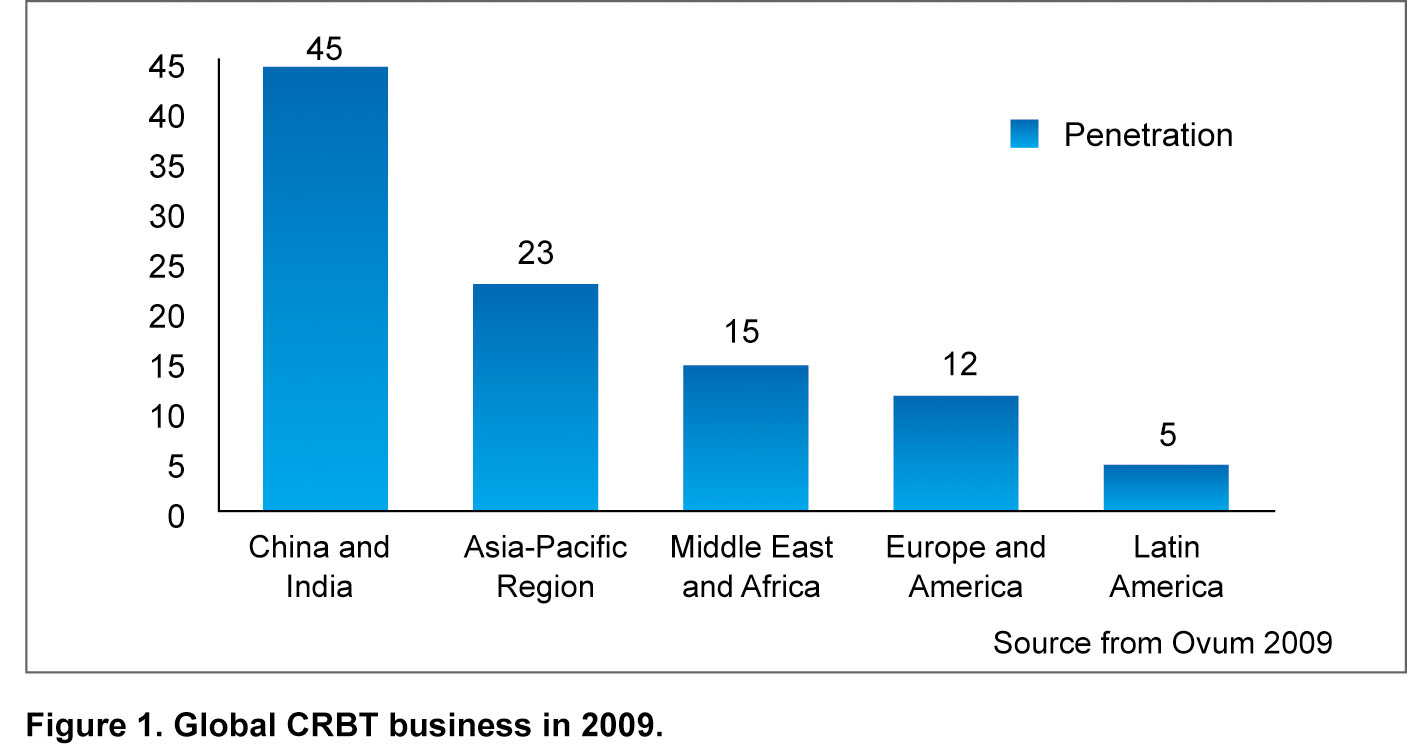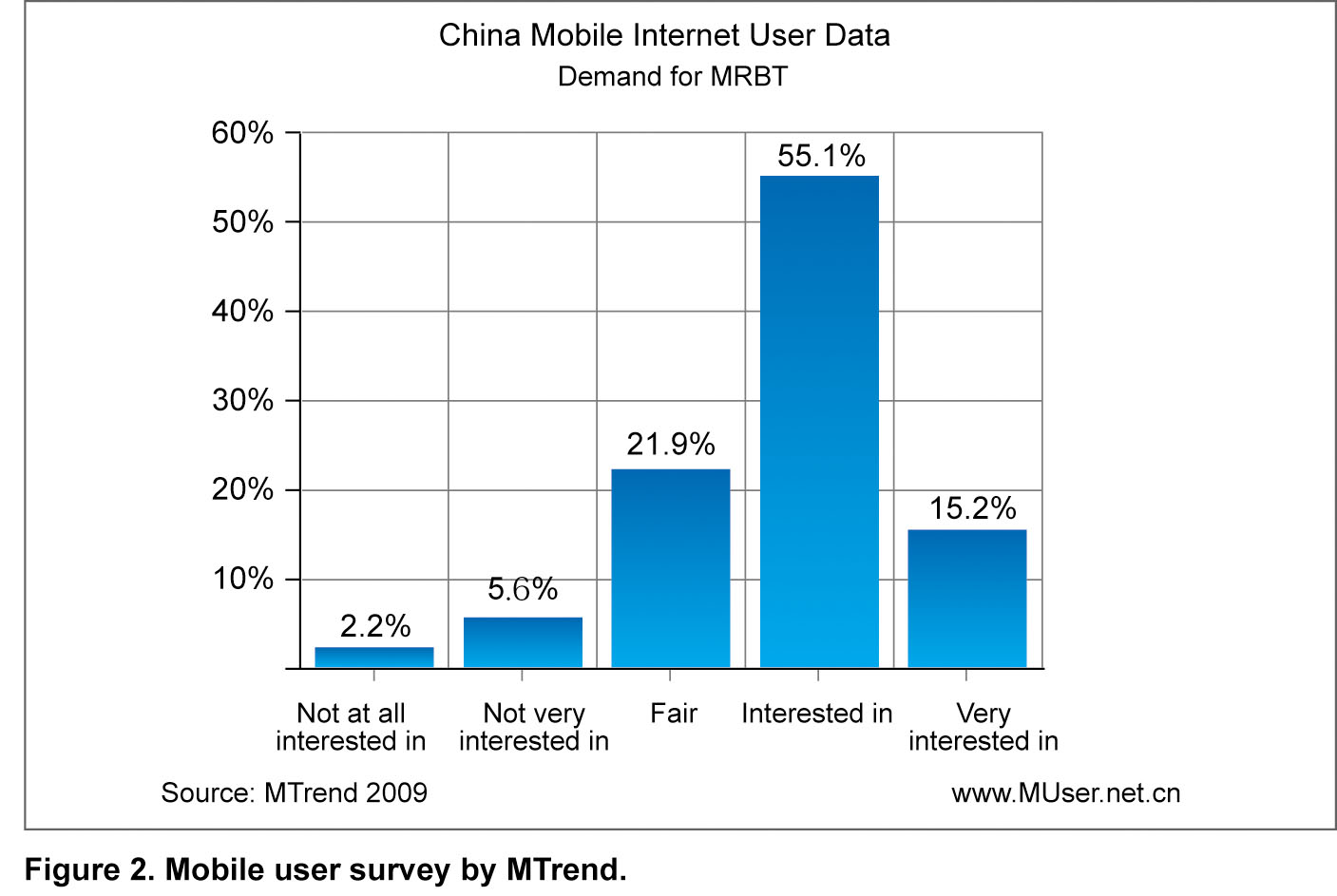MRBT: Better Ringtone Experience, Stronger Visual Impact
Special Color Ring Back Tones (CRBTs) for families and friends have become a fashionable way of personalizing mobile phones and conveying feeling. CRBT subscribers can choose a unique ringback sound for each caller. A love ballad may be suitable for a partner, a funny sound clip for a friend, or a traditional tune may be chosen to mark a festival day. CRBT is designed to liven up the line as a caller waits for connection.
Bottlenecks in CRBT Development
CRBT was first introduced by South Korea’s SK Telecom in March 2002, and has since gained widespread popularity. It satisfies a need for style and individuality in mobile communications. As a value-added service without any terminal constraints, CRBT is straightforward to use and can be spread rapidly.
In recent years, the CRBT business has grown unevenly across global markets. According to Ovum, penetration of CRBT in 2009 was 45% in China and India, but only 5% in Latin America, as illustrated in Figure 1. CRBT has developed strongly in the Asia-Pacific region—especially in China where operators have bundled it into service packages or enterprise advertisements—and it has become their main business. However, this has not been the case in Europe and America because of differences in tariffs, user cultivation methods, and more importantly, in culture. The French, for example, see that mobile phones are used primarily for answering calls and thus CRBT is of little value.

CRBT services have already matured and are widely recognized by users. Yet demands are changing and more innovative services are continually expected. With the explosion of the wireless market segment and the emergence of 3G networks, providers are seeking to develop new services and features that capitalize on the multimedia capabilities of these maturing technologies.
MRBT: An Inevitable Trend
A mobile user survey conducted by MTrend in 2009 found that 70.3% of users were interested in seeing video clips or pictures while waiting for call connection, and 15.2% were greatly interested (see Figure 2). The results suggest that service providers should be looking to provide a richer multimedia experience.

Responding to this interest, Multimedia Ring Back Tone (MRBT) has been introduced, which expands CBRT with ringback videos and pictures. Bland ringback tones of the past have been replaced, and users can now experience enriched telephone calls with attention-grabbing multimedia clips.
MRBT Scenarios
MRBT differs from CRBT, and can be applied in the following scenarios:
Scenario 1: Visualized audio call
When a call is made to a recipient with video support, the MRBT system can send a preset video clip to the recipient. Regardless of whether the caller makes a video call or not, the recipient can see the preset video clip. This cultivates a familiarity with video communication and increases video traffic.
Scenario 2: Video call avatar
During a video call, the recipient can play a preset video by pressing the DTMF key and replace the live video of the camera. This helps to protect privacy.
Scenario 3: Video call completion
If a video call is made but the recipient does not support video communication due to a terminal or network problem, the call can proceed uninterrupted even though the system is attempting to send through a preset video clip. This also helps cultivate familiarity with video communication and increases video traffic.
ZTE’s MRBT Solution
ZTE’s MRBT solution allows subscribers to personalize the look and feel of their communications with sound, pictures, animations, flash, and video clips. MRBT can be provided in both the circuit switched (CS) domain of 3G WCDMA networks and the packet switched (PS) domain of NGN/IMS networks. Either the caller or the recipient can subscribe to the service. While the phone is dialing for a connection, unique multimedia content is played to the caller.
MRBT supports three call scenarios, and ZTE has applied for patents at home and abroad for its MRBT solution in scenario 1. It has also categorized MRBT services according to user segmentation:
■ Individual users: This service targets individuals who set their preferred video clips through SMS, IVR, and the Web.
■ Family users: This service targets family members, friends, relatives, or classmates who are set as a family group in order to enjoy the same or similar video clips. One group member is chosen to manage video content and to manage other members.
■ Corporate users: This service targets corporate groups. Employees are designated as group members, some of whom are chosen to manage group members, to set the ringback play time, to monitor corporate video clips, and to collate usage statistics.
■ Advertisers: This service targets enterprises and manufacturers who make advertising video clips to be shown to public upon approval. If individual users subscribe to such advertising, they may receive benefits such as discount coupons. ZTE’s MRBT also supports advertising for shop sales campaigns.
Conclusion
With the promotion of 3G applications and the growing popularity of smart phones, mobile phones are no longer merely tools for answering calls, sending messages, or updating ring tones—they are a multimedia infotainment platform integrating information, entertainment, mobile e-commerce, and mobile payment functions. With further 3G rollout, MRBT is sure to offer a more colorful ringtone experience and stronger visual impact.